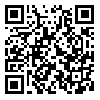
Plant Pathology Science

Volume 10, Issue 1 ((Autumn & Winter) 2021)
Plant Pathol. Sci. 2021, 10(1): 1-13 |
Back to browse issues page
Download citation:
BibTeX | RIS | EndNote | Medlars | ProCite | Reference Manager | RefWorks
Send citation to:



BibTeX | RIS | EndNote | Medlars | ProCite | Reference Manager | RefWorks
Send citation to:
Karbalaei Khiavi H, Seyed Masoumi S Y, Pirayesh A, Khabbaz Jolfaei H. (2021). Reaction of ten peach and ten nectarine cultivars to powdery mildew. Plant Pathol. Sci.. 10(1), 1-13. doi:10.52547/pps.10.1.1
URL: http://yujs.yu.ac.ir/pps/article-1-329-en.html
URL: http://yujs.yu.ac.ir/pps/article-1-329-en.html
Department of Plant Protection Research, Ardabil Agricultural and Natural Resources Research and Education Center, AREEO, Ardabil, Iran. , Hossein.karbalaei@yahoo.com
Abstract: (5745 Views)
Karbalaei Khiavi H, Pirayesh A, Seyed Masoumi SY, Khabbaz Jolfaei H (2021). Reaction of ten peach and ten nectarine cultivars to powdery mildew. Plant Pathology Science 10(1):1-13. Doi: 10.2982/PPS.10.1.1.
Introduction: Powdery mildew caused by Podosphaera pannosa is one of the most important diseases of peaches and nectarines worldwide, including Iran. The aim of this research was to investigate the response of peaches and nectarines under cultivation in Iran to the disease. Materials and Methods: Reaction of ten peach cultivars vs. Robin, Early Red, Red Top, Shasta, Amesdn, Velvet, Anjiri, Paeizeh, Dixi Red, and Sun Crest, and ten nectarine cultivars vs. Independence, Stargold, Sangold, Sanking, Giuta, Shabrang Karaj, Vega, Orion, Jiova and Veinberger were evaluated for disease in natural and artificial infection conditions in two experiments in a randomized complete block design with three replications over two years at the Meshgin Shahr Agricultural and Natural Resources Research Station. Results: Analysis of variance of experimental data showed that there was a significant difference between cultivars of each plant at a probability level of 1%. Peach cultivars Anjiri and Red top were very resistant, Velvet, Shasta and Early red were resistant; Amesdn, Dixi red and Robin were moderately resistant; Sun crest was susceptible and Paeizeh was in very susceptible. Weinberger nectarine cultivars were resistant and Independence, Stargold, Sanking, Giuta, Shabrang Karaj, Vega, Orion and Jiova cultivars were semi-resistant and Sangold was very susceptible to disease. Conclusion: Eighty percent of the studied peach cultivars are very resistant to semi-resistant and 20% sensitive and very sensitive, 90% of the studied nectarine cultivars are resistant to semi-resistant and 10% susceptible to powdery mildew. Findings of this research should be considered in the management of peach and nectarine powdery mildew.
Type of Study: Research |
Subject:
Special
Received: 2021/03/31 | Accepted: 2021/05/26 | Published: 2021/07/18
Received: 2021/03/31 | Accepted: 2021/05/26 | Published: 2021/07/18
References
1. Ahari Babaei A, Hoshanghy AH (1994) Diseases of Fruit Trees and Vines. Uremia University Press, Iran. 186p. (In Persian).
2. Ahoonmanesh A (1999) Principles of combating plant diseases. Publishing Center, University of Technology. 324p. (In Persian).
3. Behdad E (1990) Phytopathology and Important Plant Diseases of Iran. Isfahan, Neshat Press. 110p. (In Persian).
4. Fang Z (1979) Methods in Plant Pathology. Agricultural Press, Beijing P.R., China, 345p.
5. Ivascu A, Balan V (1994) Behavior of some peach and nectarine cultivars and hybrids at the attack of mildew under the climatic conditions of the southern area of Romania. Proceedings of 24th International Horticultural Congress, Kyoto, Japan, 21-27.
6. Ivascu A, Balan V, Toma S (1996) Peach and nectarine genitors with highly resistant to powdery mildew. Scientific Sessions ICPP 125-129.
7. Ivascu A, Buciumanu A (2006) Situation of peach resistance to diseases in Romania. International Journal of Horticultural Science and Technology 12:65-69. [DOI:10.31421/IJHS/12/3/661]
8. Kervella J, Pascal T, Pfeiffer F, Dirlenwanger E (1998) Breeding for multi resistance in peach trees. Acta Horticulture 465:177-181. [DOI:10.17660/ActaHortic.1998.465.20]
9. Khbbaz Jolfaee H (2017). Identification and Management of Peach Leaf Curl Disease. Iranian Research Institute of Plant Protection, Tehran, Iran, 35p. (In Persian).
10. Lenn JM, Wood D (1991) Plant disease and the use of wild germplasm. Annual Review of Phytopathology 29:35-63. [DOI:10.1146/annurev.py.29.090191.000343]
11. Linde M, Debener T (2003) Isolation and identification of eight races of powdery mildew of roses (Podosphaera pannosa (Wallr.: Fr.) de Bary and the genetic analysis of the resistance gene Rpp1. Theoretical and Applied Genetics 107:256-262. [DOI:10.1007/s00122-003-1240-1] [PMID]
12. Martin M, Piola F, Chessel J, Heizmann P (2001) The domestication process of the modern rose, genetic structure and allelic composition of the rose complex. Theoretical and Applied Genetics 102:398-404. [DOI:10.1007/s001220051660]
13. Neamtu M, Barbulescu A, Petcu A, Ilie A, Calinita C, Mocanu S (2008). Evaluation of the genetic resistance of some apricot and peach cultivars confronted with diseases. Scientific Papers of the Research Institute for Fruit Growing Pitesti, Romania 24:41-44.
14. Ognjanov V, Vujanic-Varga D, Gasic K, Nadj B (2000) Disease resistance in apple, pear and peach germplasm originating from the Balkan Peninsula. In 25th International Horticultural Congress, Part 3: Culture Techniques with Special Emphasis on Environmental Implications, 513:63-68. [DOI:10.17660/ActaHortic.1998.513.6]
15. Pascal T, Pfeiffer F, Kervella J (2012) Powdery mildew resistance in the peach cultivar Pamirskij5 is genetically linked with the Gr gene for leaf color. Horticultural Science 45:150-152. [DOI:10.21273/HORTSCI.45.1.150]
16. Pfeiffer DG (1999) Virginia apple and peach tree survey. Virginia Agricultural Statistics Service, Richmond, Virginia Bulletin 68:11-16.
17. Rasoulzadegan Y (1991) Temperate Zone Pomology: Physiology and Culture. Isfahan University Press. 759p. (In Persian).
18. Toma S, Ivascu A (1997) Behavior of some peach and nectarine varieties and hybrids to mainly diseases: leaf curl and powdery mildew in Romania. Proceedings of 25th International Horticultural Science Congress, 9-12 September Lednice na Morave, 174-176.
19. Toma S, Ivascu A, Oprea M (1998). Highlights of epidemiology of the fungus Sphaerotheca pannosa var. persicae in the southern zone of Romania. In IV International Peach Symposium 465:709-714. [DOI:10.17660/ActaHortic.1998.465.89]
20. Toma S, Ivascu A, Oprea M, Delian E (2003) Evaluation of powdery mildew resistance at some peach and nectarine cultivars and hybrids by physiological parameters. Acta Horticulture 623:291-298. [DOI:10.17660/ActaHortic.2003.623.32]
Send email to the article author
| Rights and permissions | |
 |
This work is licensed under a Creative Commons Attribution-NonCommercial 4.0 International License. |




